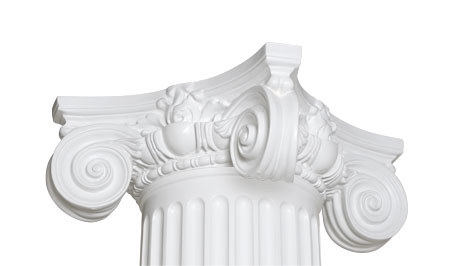| FRP-COLUMNS | |||||
| Home | |||||
| Column Terms | |||||
| Capitals | |||||
| Empire | |||||
| Greek Agnular Ionic | |||||
| Greek Erectheum | |||||
| Roman Corinthian | |||||
| Roman Doric | |||||
| Roman Ionic | |||||
| Temple of the Winds | |||||
| Scamozzi | |||||
| Tuscan | |||||
| Column styles | |||||
| Square Non Tapered | |||||
| Smooth | |||||
| Fluted | |||||
| Raised Panel | |||||
| Round Tapered | |||||
| Smooth | |||||
| Fluted | |||||
| Round Non Tapered | |||||
| Smooth | |||||
| Fluted | |||||
| Base's | |||||
| Attic | |||||
| Tuscan | |||||
| Instalation Instructions | |||||
| Load Bearing Installation Package (.PDF 779kb) | |||||
| Non-Load
Bearing Installation Package (.PDF 779kb) |
|||||
| Scamozzi Capital | ||
 |
||
The Scamozzi capital is a modification of the Corinthian and Ionic capitals that transformed its appearance and aesthetic effect. Both the Ionic and the Corinthian capitals featured four scrolls, or “volutes,” which carved opposite one another at the ends of two sides of the capital’s square top. The scrolls “turned” along the same plane, appearing to be wrapped in opposite directions. The scrolls on one side of the square were mirror images of the scrolls on the opposite side. The Scamozzi capital changes the look and function of these volutes. The Scamozzi capital realigns each scroll forty five degrees so
that it faced out from the corner on which it was positioned. He
placed them directly under the capital’s top surface, so
that they appeared to be supporting the surface. The square developed
concave sides that curved inward from one corner than outward to
the next. Along with the realigned scrolls and curves to the edges
of the top, the Scamozzi capital incorporated some of the classical
elements of the Corinthian capital. Acanthus leaves and rosettes
also adorned the Scamozzi capital. |